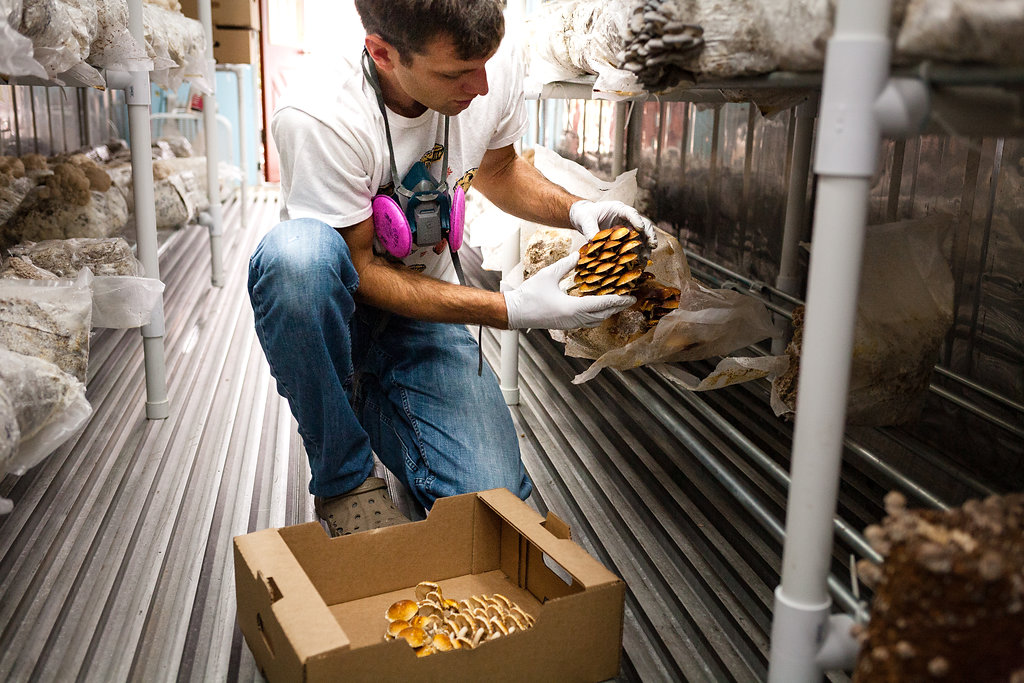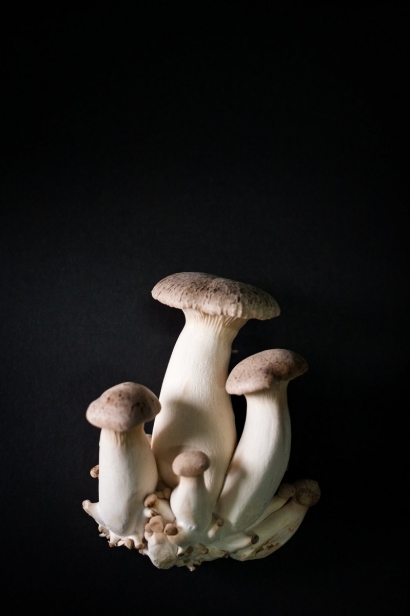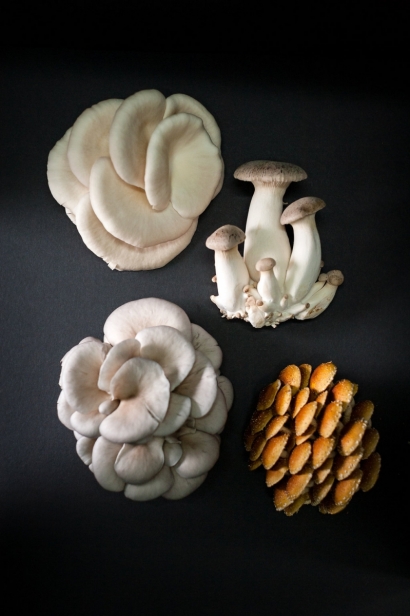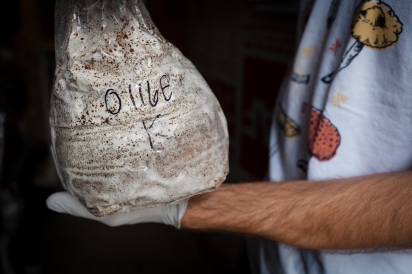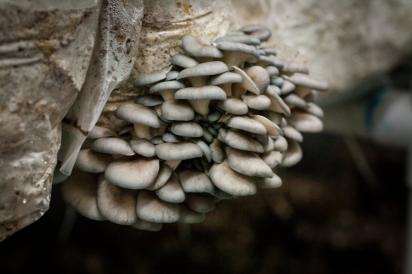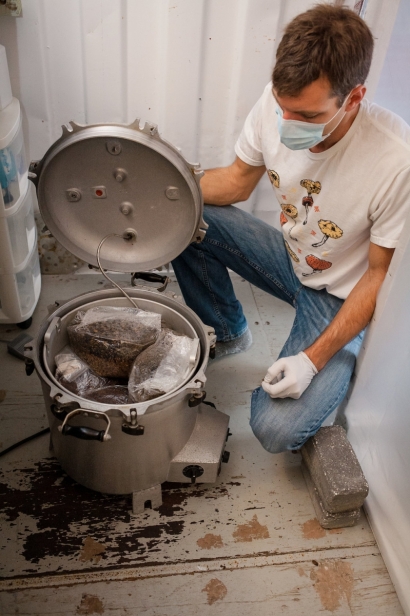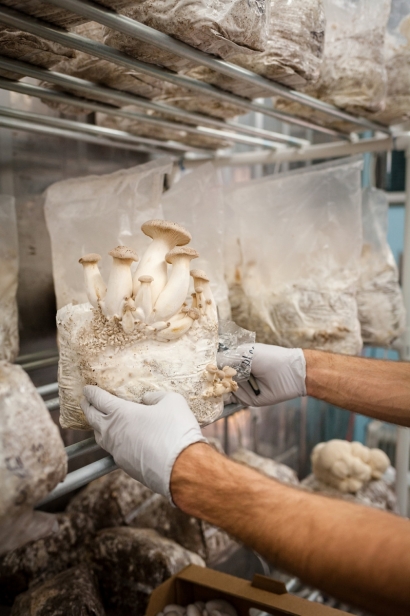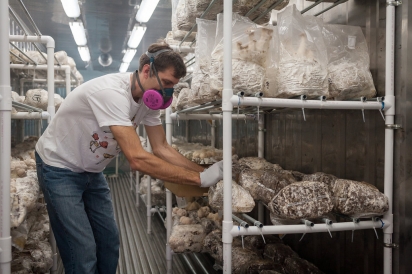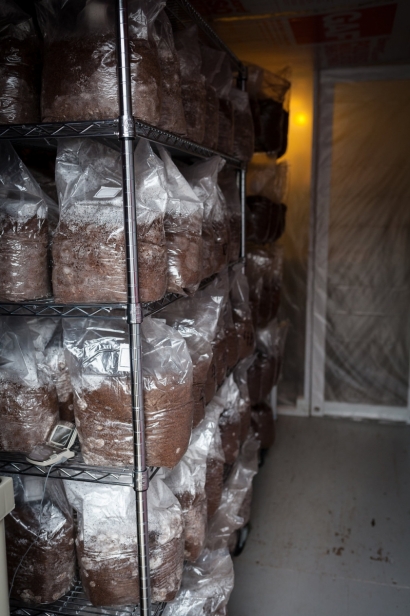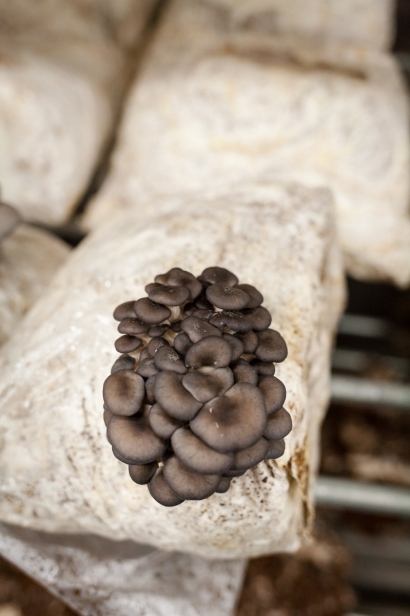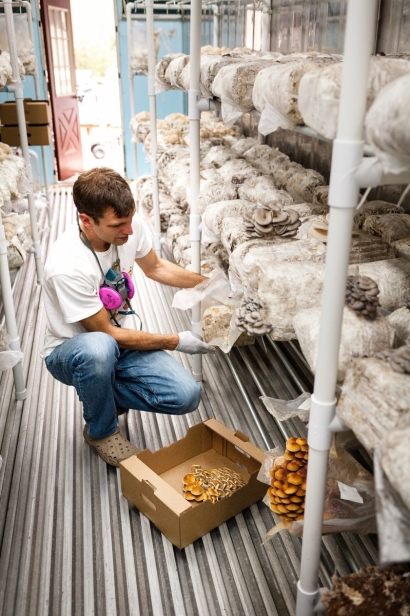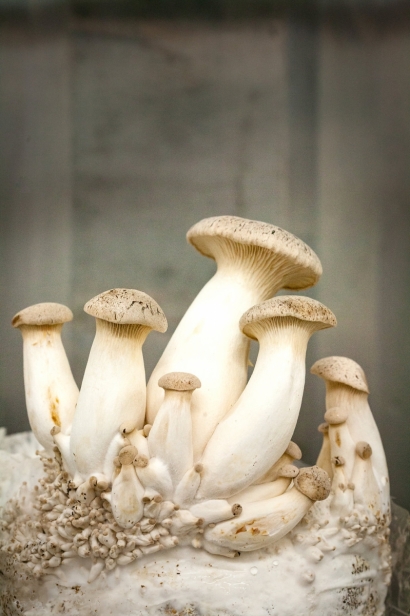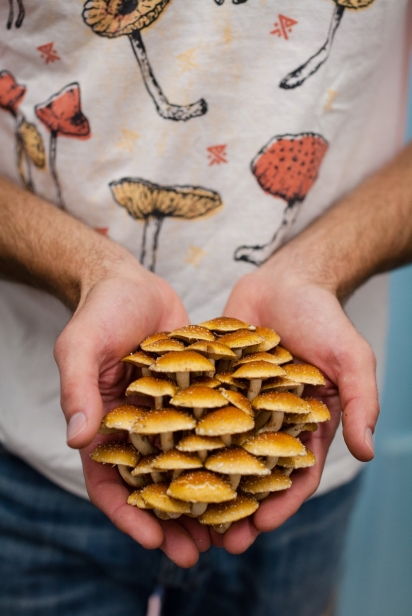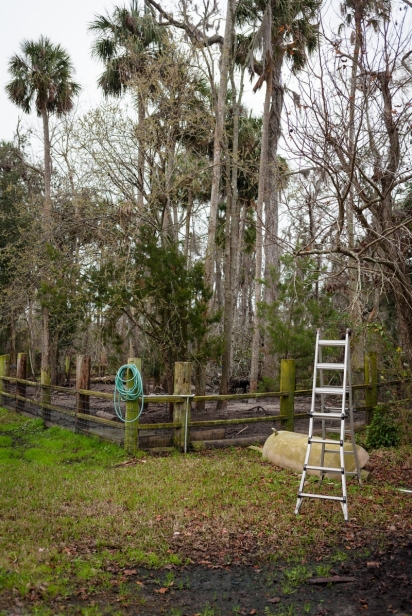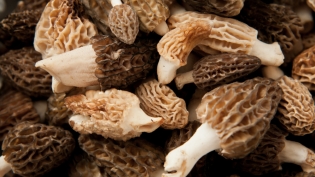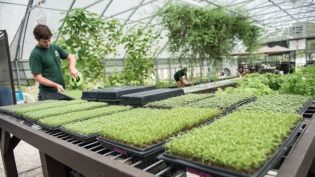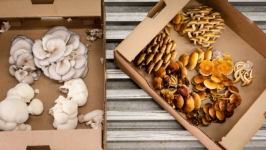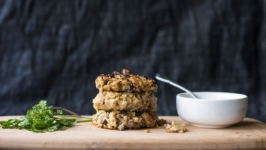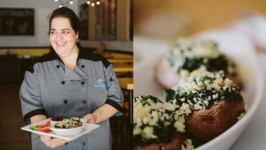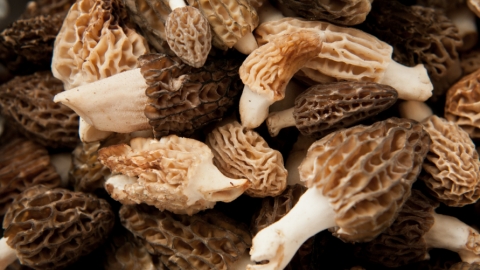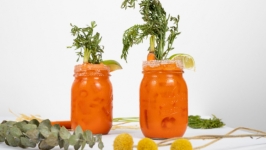A Fungus Among Us
Tucked away on a side road in Palm Valley, in the shadows of TPC Sawgrass, a trailer-sized grow house is cultivating mushrooms of various shapes and species. Inside the facility, Eric Pearson waves his hand in front of two air ducts to double check proper flow, then examines the facility’s humidity gauge before evaluating dozens of bags of maturing mushrooms along each shelf.
In a nearby storage area, he analyzes bags of grain spawn that promote the mycelium expansion which galvanizes the mushroom-making magic. He’s meticulous at each checkpoint, from petri dish to harvest, and his exertions are rewarded as he produces cardboard trays of trumpet, oyster, Lion’s Mane, shiitake and chestnut destined for local restaurants and home kitchens. It’s easy to be smitten with the fresh and delicate mushrooms, as they possess the trifecta of being local, healthful and sustainable.
“I think more and more people are realizing the benefits of mushrooms. You have large vegetarian and vegan diet movements, more people eating less meat and the emerging research that shows the medicinal and immunity benefits from consuming mushrooms,” said Pearson, owner of Son & Skye Mushrooms.
Mushrooms are superfoods that contain powerful immunity-boosting antioxidants. They are packed with many of the nutritional benefits found in other vegetables, as well as meat, beans and grains. Mushrooms are a clean, fat-free protein, and they are better for the planet. Beef production alone utilizes about three-fifths of the world’s land, but yields less than 5 percent protein, while growing one pound of mushrooms only requires 1.8 gallons of water. One acre can yield up to one million pounds of mushrooms, according to the Mushroom Council. Plus, mushrooms enrich many a dish with their rich, umami flavor.
All these benefits incentivized Pearson to launch Son & Skye Mushrooms in 2015, after voraciously reading about the pursuit as he contemplated various entry points into small-plot farming. He and his wife, Catherine, saw a niche in the region’s commercial mushroom-growing efforts. Son & Skye sells about 100 pounds of mushrooms a week, mostly to various restaurants throughout Jacksonville and St. Augustine, and at Beaches Green Market in Jacksonville Beach. He plans to triple his production by the end of 2018.
“We regularly feature their local mushrooms in our dishes, whether trumpets in a flounder main course, or the oyster mushrooms that give a nice meaty texture to a risotto,” said Kevin Gaston, executive chef at Eleven South in Jacksonville Beach. “They’re always fresh and on point. Sometimes we’ll toss some salt, oil, thyme, pepper and chopped garlic together, then drizzle it over some oysters on a mesquite grill. They catch the flavor really well. It’s like eating steak.”
BEAM has been growing shiitake mushrooms in its mushroom house for about 4 years with the help of University of North Florida, Stanton College Preparatory School and North Florida School of Special Education. BEAM promotes the mushrooms as an alternative to or as a blend with meat to its community of vulnerable area residents.
“Even substituting mushrooms for half of the meat in meatballs or the like will help cut calories and saturated fat intake and provide extra fiber and nutrients like B vitamins and potassium,” said Rachel McCandless, registered dietitian nutritionist at BEAM. The nonprofit supplies its clients with shiitakes when they are available, which provides residents easier access to an item that otherwise can run in the double-digit price range at local grocery stores.
In January, the first Florida Mushroom Festival was held in Interlachen and drew mushroom enthusiasts and professionals alike from throughout the Southeast. The event was indicative of the growing potential for creative mushroom-growing endeavors throughout Northeast Florida and the state in general, said Tradd Cotter of Mushroom Mountain, a South Carolina mushroom laboratory and research facility. “We’re developing some warmer strains that can handle the Florida climate,” he said. “Shiitakes like hardwoods and maple, but they disappear as you go further south. Most oyster growers in North America source wheat or cotton for growing mushrooms, but there’s not much available in Florida. We look at what mushrooms can grow on, like sugarcane waste, hyacinths and invasive strains of plants. Mushrooms can easily be trained to grow on new food sources.”
As the sustainable and local food-growing momentum gains ground here in Northeast Florida, mushrooms may play a more visible role feeding our nutritional and ecological well-being, from playing starring roles in restaurant dishes and home-cooked meals, to having a more intentional presence in our own backyards.
“I think Florida has a bright mushroom-growing future,” Cotter said.
Want to connect with Son & Skye Mushrooms to learn more? Keep up to date with them online here.


